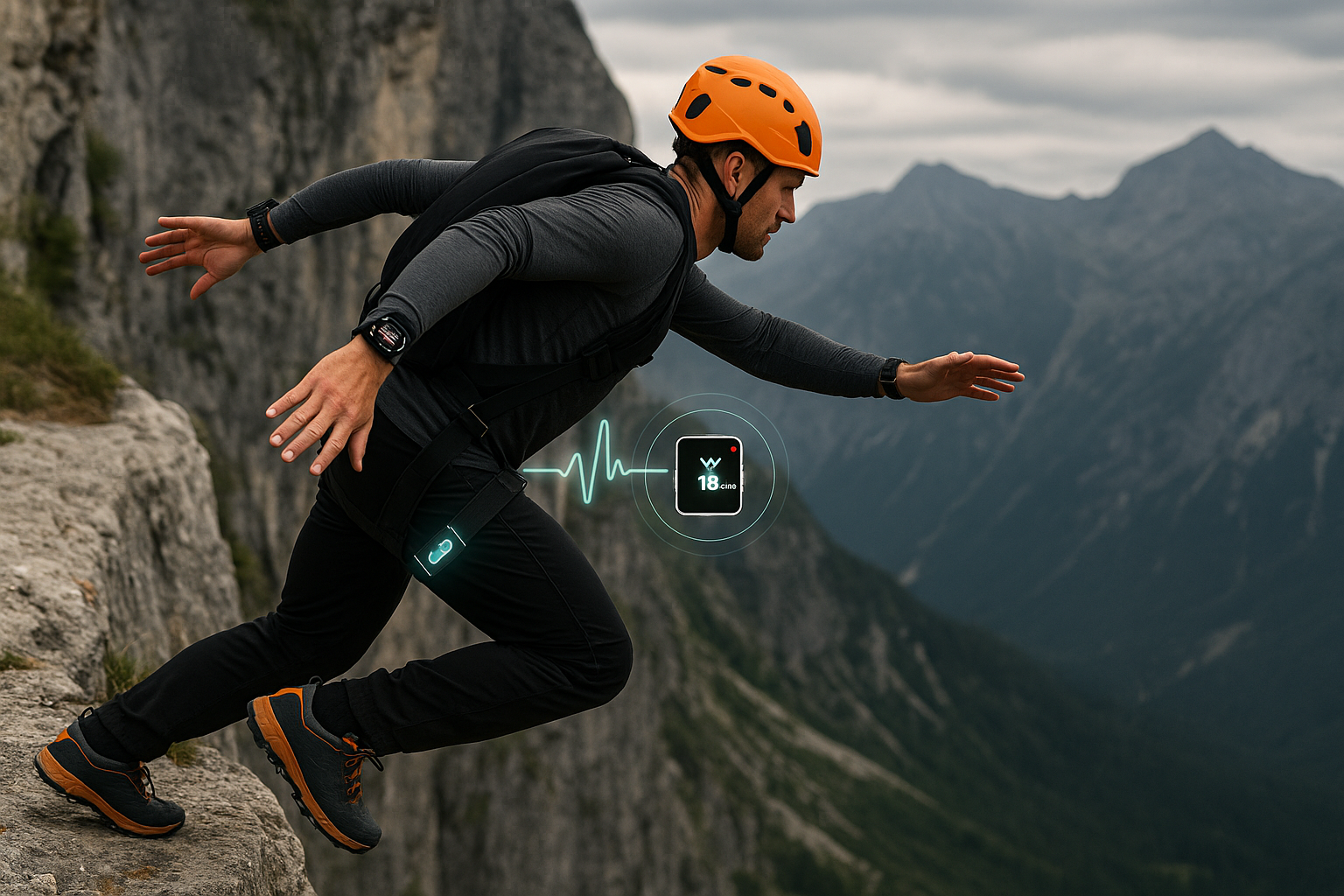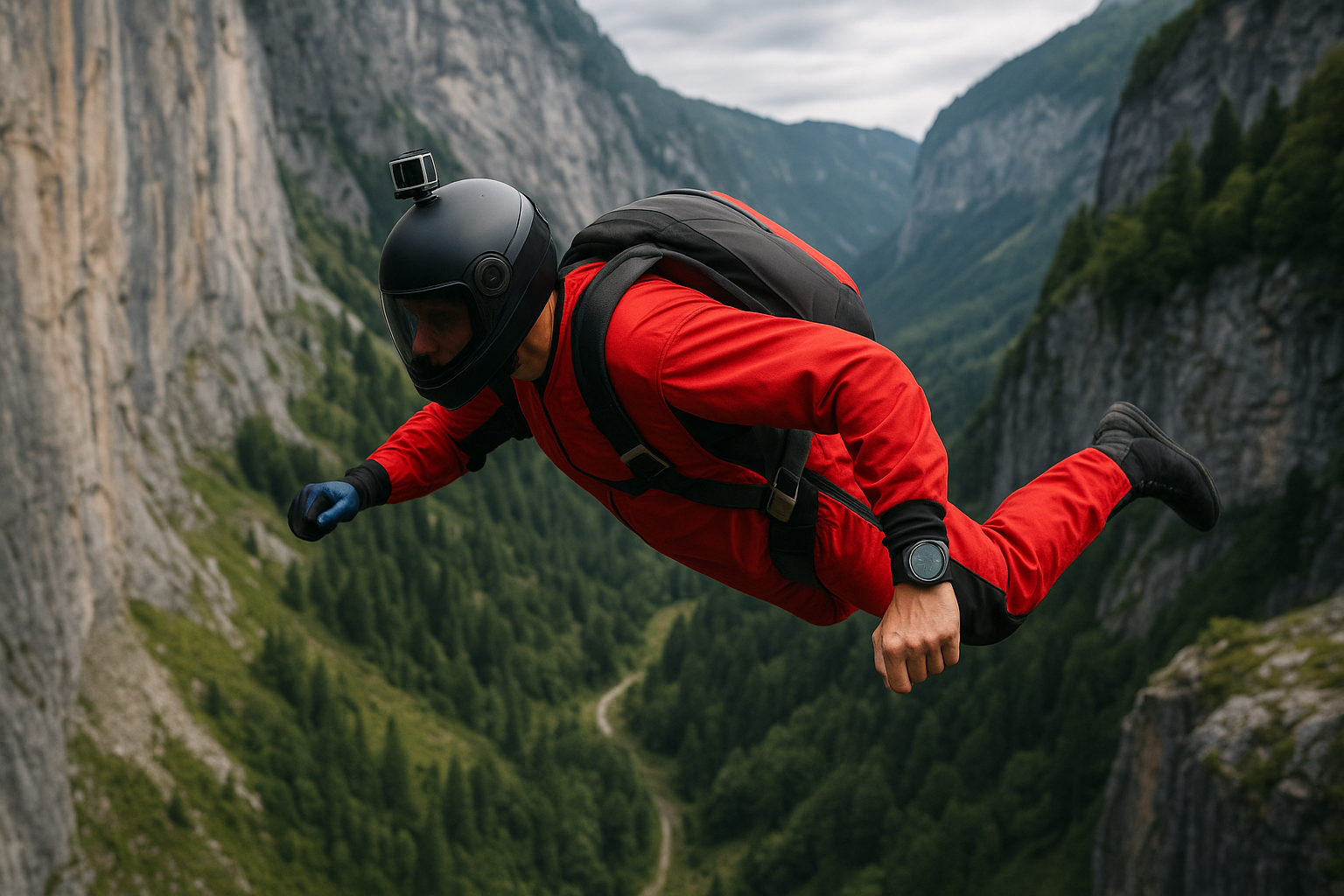BASE jumping is one of the most extreme sports out there. Leaping off cliffs, towers, or bridges with just a parachute and nerves of steel, jumpers face serious risks every time they take the leap. Weather shifts, equipment failure, and human error can turn a thrilling jump into a dangerous situation within seconds. But what if technology could help reduce those risks and give athletes more control? Real-time biometric monitoring—tracking heart rate, blood pressure, and GPS location—might be the key to making this adrenaline-pumping sport a bit safer and smarter.

The Role of Biometric Monitoring in Extreme Sports
Wearable tech is becoming more common in extreme sports. Tools like heart rate monitors, pulse oximeters, and GPS trackers offer real-time insights that help BASE jumpers manage risk.
Tracking vitals mid-jump can alert athletes to serious issues, like sudden heart rate spikes or oxygen drops. This feedback is critical for making snap decisions or calling off a jump.
Some systems in development can even auto-deploy a parachute if a jumper loses consciousness. These innovations, while early, show great potential for improving safety.
Similar technologies are already used in sports like alpine skiing and deep diving. It's part of a growing push to make dangerous activities safer without dulling the thrill.
For those drawn to risk and excitement, whether physical or digital, Avia Master taps into that thrill.
Key Benefits of Real-Time Monitoring
Implementing biometric monitoring in BASE jumping offers several critical advantages:
- Immediate Feedback: Jumpers receive live data on heart rate, blood pressure, or stress levels, allowing for snap decisions and quick reaction times.
- Enhanced Safety: Monitoring vital signs helps detect early signs of trouble like hyperventilation, panic, or heart arrhythmias before they escalate.
- Data Collection: Over time, data logs help jumpers better understand their body's response to jumps, contributing to smarter training programs.
- Emergency Response: In case of a malfunction or injury, real-time biometric and location data assist search and rescue teams in locating the jumper and assessing their condition fast.
- Pre-Jump Screening: Some systems can assess if the jumper is physically fit for a jump based on real-time vitals, reducing the chance of preventable incidents.
These benefits highlight the growing role of biometric tech in transforming extreme sports. It's not just about adding a safety net—it's about giving athletes tools to fine-tune their bodies and decisions without losing the thrill.
Challenges and Considerations
While the integration of biometric monitoring in BASE jumping is promising, several hurdles remain:
- Equipment Durability: Devices must be compact, rugged, and waterproof to withstand tough conditions like high wind speeds, sudden temperature changes, and hard impacts.
- Data Accuracy: Reliability is key. Inaccurate readings can be worse than no readings, leading to false alarms or dangerous misinterpretation.
- User Acceptance: Some seasoned athletes resist tech additions, seeing them as distractions or burdens. Devices must be lightweight, intuitive, and seamlessly integrated into gear.
- Cost: Advanced wearable tech is not cheap. Making it more accessible for non-professional jumpers is essential for wide-scale adoption.
- Battery Life: A device that dies mid-jump is useless. Longer battery life and energy-efficient designs are critical.
Addressing these issues requires tight collaboration between hardware designers, sports scientists, and BASE jumpers themselves. Usability must go hand in hand with precision and robustness.
Extra Use Cases and Safety Tactics
Aside from BASE jumping, similar biometric systems are being deployed in wingsuit flying, free solo climbing, high-altitude skydiving, and paragliding. These are all sports that push both physical and mental limits. Monitoring physiological and cognitive stress levels can be the difference between a successful stunt and a critical failure.
Let’s break down some core safety tactics that are now becoming standard thanks to biometric and GPS-based systems:
- Custom Alert Systems
- Delivers alerts when vitals deviate from a safe zone.
- Helps solo jumpers training in isolated environments.
- Detects early signs of altitude sickness, dehydration, or panic.
- Geo-Fencing and Route Tracking
- Establishes digital safety zones.
- Sends automated alerts if a jumper veers off track.
- Useful for crowded jump zones or difficult terrain.
- Post-Jump Biometric Analysis
- Records and analyzes data trends.
- Highlights stress patterns, recovery times, and physiological thresholds.
- Supports safer routines, smarter prep, and better coaching feedback.
These tools do more than protect; they empower. They give athletes better insight, more precision, and the ability to adapt with each jump.

Conclusion
BASE jumping will always carry inherent risks, but embracing biometric technology could mitigate some of these dangers and give athletes an edge. By providing real-time insights into a jumper's physical state and exact location, these tools offer a new layer of awareness and security without taking away from the raw excitement of the sport. The fusion of adrenaline, tech, and data opens up smarter ways to explore human limits—safely, boldly, and with better tools at our backs.







